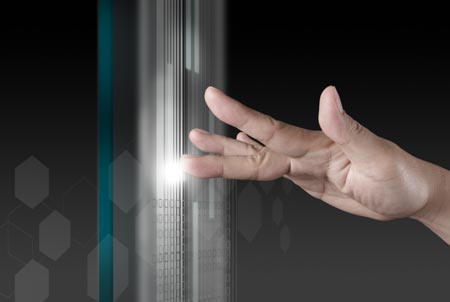Technology
EUROPEAN CONSUMERS READY TO USE BIOMETRICS FOR SECURING PAYMENTS

- Two-thirds of consumers want to use biometrics when making payments
- Three-quarters see Two Factor Authentication, where a form of biometrics is used in conjunction with a payment device, as secure
- Half think payments will be faster and easier with biometrics
- Fingerprint recognition is the most popular form of biometric
Visa Inc. (NYSE: V) According to new research from Visa, consumers across Europe are interested in using biometrics when making a payment – especially when integrated with other security measures. Nearly three-quarters (73%) see two-factor authentication, where a biometric is used in conjunction with a payment device, as a secure way to confirm an account holder. Two-factor authentication includes something you have, such as a card or a mobile device; something you are, such as a biometric; or something you know such as a PIN or password. When looking at the range of different payment situations at home or on the high street, over two-thirds (68%) want to use biometrics as a method of payment authentication. Online retailers have the most opportunity for gain as nearly a third (31%) of people have abandoned a browser-based purchase because of the payment security process.
Jonathan Vaux, Executive Director of Innovation Partnerships said:
“Biometric identification and verification has created a great deal of excitement in the payments space because it offers an opportunity to streamline and improve the customer experience.Our research shows that biometrics is increasingly recognised as a trusted form of authentication as people become more familiar with using these capabilities on their devices.
“However, one of the challenges for biometrics is scenarios in which it is the only form of authentication. It could result in a false positive or false negative because, unlike a PIN which is entered either correctly or incorrectly, biometrics are not a binary measurement but are based on the probability of a match. Biometrics work best when linked to other factors, such as the device, geolocation technologies or with an additional authentication method. That’s why we believe that it’s important to take a holistic approach that considers a wide range of enabling technologies that contribute to a better end-to-end experience, from provisioning a card to making a purchase to checking your balance.”
When looking at the benefits of biometric authentication – the process that validates a person’s identity by measuring an intrinsic characteristic specific to an individual such as fingerprints or iris patterns – half of Europeans (51%) state that biometric authentication for payments could create a faster and easier payment experience than traditional methods. Similarly, a third (33%) like the fact that biometric authentication means that their details would be safe even if their device was lost or stolen.
Vaux continued:
“As we move into the future, consumers will have an increasing number of choices in how they pay. Just as the payment behavior will change dependent on where you are and on what device you are shopping, the methods of authentication will need to be use-case appropriate. While biometric forms of authentication offer significant opportunities to achieve the right balance between convenience and security, they are not the only answer. In the future we will see a mix of solutions dependent on the purchasing situation. By adapting our standards to recognise these technologies as valid forms of authentication now, we can help provide the environment for payments to continue to take place securely, conveniently and discreetly.”
Familiarity of Fingerprint
In the study of over 14,000 European consumers, the research reveals that discretion and familiarity with biometric forms are important factors for uptake. With the advent of mobile payments, fingerprint recognition is deemed to be the most favourable form of biometric payment for its ease of use and security. When looking solely at the perceived security of biometric technologies, 81% of consumers see fingerprints as most secure, followed by iris scanning (76%).
This is why more than half (53%) express a preference for fingerprint over other forms of biometric authentication when using it for payment.
Across Europe, few people say they would prefer voice or facial recognition as a payment method in a range of payment situations whether physically in a shop paying for goods or services, or shopping online at home (12% and 15%, respectively). In the UK, these figures fall to 8% and 12%, respectively, for voice or facial recognition as payment forms.
The Balance Between Security and Frictionless Commerce is Key
With over two-thirds (67%) of consumers recognising the importance of security details to protect one’s identity, new forms of authentication must reach a balance between speed and security.
The research found that biometric authentication is almost equally valued in face-to-face payment situations where speed efficiencies are a priority as it is for online transactions. This is reflected in the findings:
- 48% want to use biometric authentication for payments when on public transport
- 47% want to use biometric authentication when paying at a bar or restaurant
- 46% want to use it to purchase goods and services on the high street e.g. groceries, coffee and at fast food outlets.
- 40% want to use it when shopping online
- 39% when downloading content

-
Business3 days ago
Mike Bahun and Fundraising University Make a Lasting Impact on Sports Programs Nationwide
-
Top Stories3 days ago
After VW plant victory, UAW sets its sights on Mercedes in Alabama
-
Investing3 days ago
Forex Market Trends to Watch Out For in 2024
-
Top Stories3 days ago
Hedge fund borrowing hits five-year peak, Goldman Sachs says








